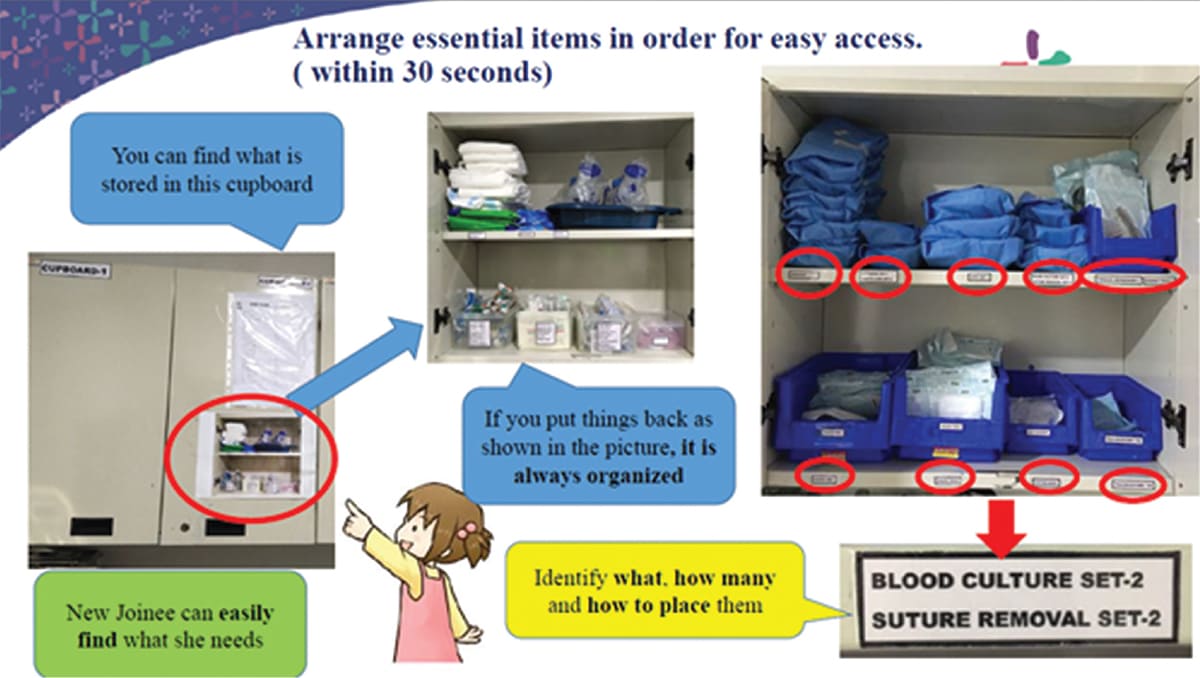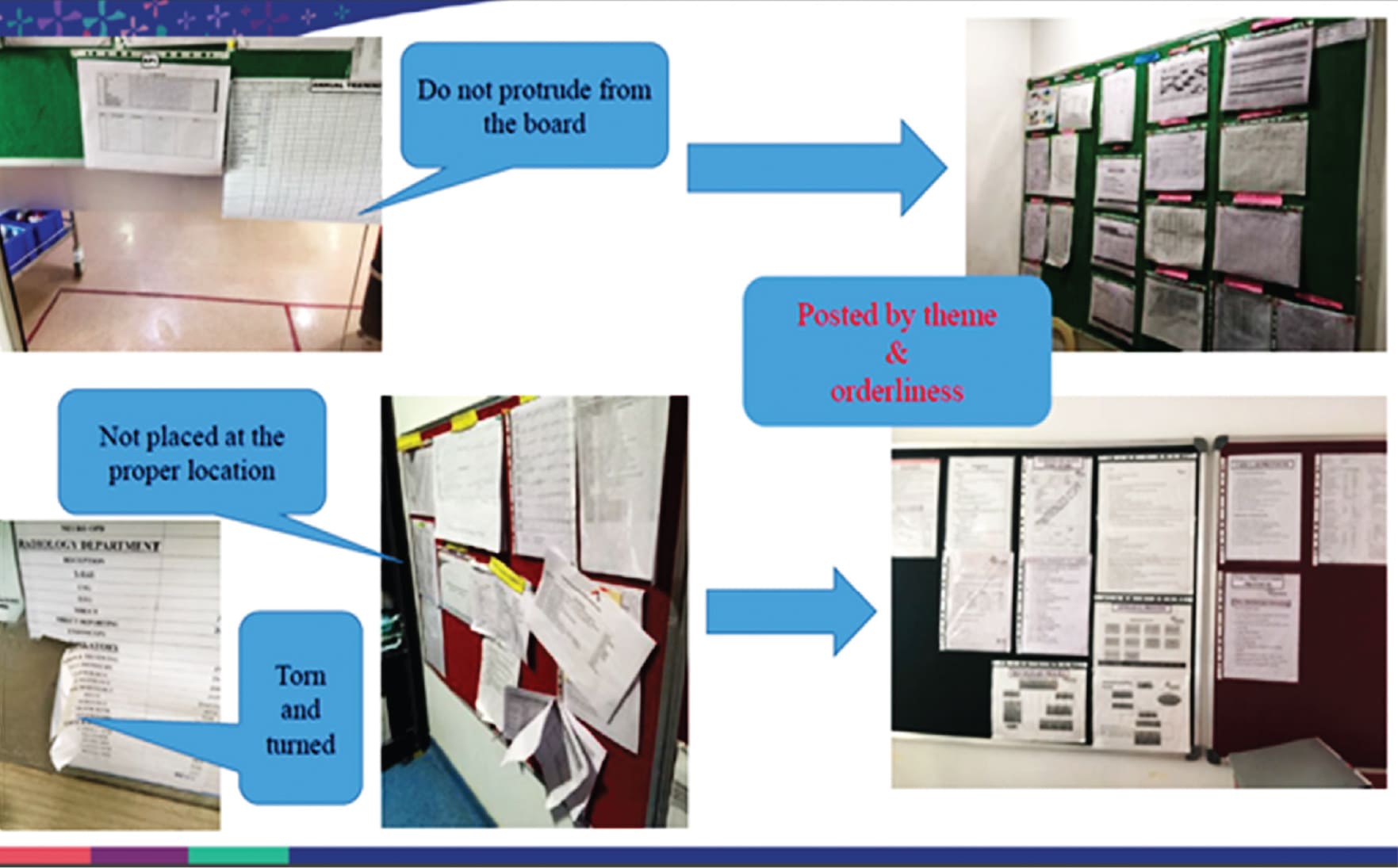How many times have you thought of implementing the 5S philosophy at your hospital? I am sure that this thought has crossed your mind several times. But you may think that a complete overhaul of the process within your hospital setting to accommodate the 5S philosophy could be difficult. That’s a misconception. In this article, I will explain how 5S in healthcare can help you increase efficiency, reduce medical errors and save costs.
What is 5S philosophy?
5S in hospitals is a concept derived from lean manufacturing which makes processes run more smoothly and prevents medical errors, and saves cost.
Significance of 5s in hospitals
The major difference between engineering, manufacturing plants, and hospitals is the repetitive nature of work. A worker on a shop floor of a manufacturing plant will conduct a series of tasks in the same way throughout his work shift, whereas each patient in a hospital is treated differently based on the nature of the illness. In spite of the differences, hospitals have a lot to emulate from lean manufacturing plants. One of the practical programs hospitals can adopt is the 5S philosophy of process improvement. The philosophy of 5S in healthcare represents a way of focusing and thinking in order to better organize and manage the workspace, specifically by eliminating waste as defined by the Lean Manufacturing system. It is one of the most widely used and fundamental components of Lean Manufacturing. Its simple, commonsense application is highly effective and reliable as a stabilizing force in Lean strategies.
5S philosophy for process improvement
The 5S in healthcare focuses on organizational cleanliness i.e. seitan and standardization to improve profitability, efficiency, and safety by reducing wastes of all types. The 5S philosophy was born in Japan with each S designating progression in implementation.
The 5S case study
A non-invasive cardiology department in a multi-speciality hospital was struggling to cope with patient management. At this department,
patients had to wait for a long time to get their clinical examinations such as i.e. ECG, TMT, and Echo. The department was demanding additional space to put up one more ECG room to cater to the growing patient load. The departmental facility had the following functional rooms on the ground floor of the main building.
- ECG room with two equipment
- Echo colour Doppler room -1
- Echo colour Doppler room-2
- TMT room
- Holter/Ambulatory BP unit room
- Common Doctors room
The footfall of patients per day was around 115 (including both outpatient & inpatient) and department functions between 9 am till 6 pm.
The table shown below
provides meaning of each S.
| Japanese Term | English Translation | Equivalent 'S' term |
|---|---|---|
| Seiri | Organisation | Sort |
| Seiton | Tidiness | Systematise (storage) |
| Seiso | Cleaning | Sweep (shine) |
| Seiketsu | Standardisation | Standardise |
| Shitsuke | Discipline | Self – Discipline (Sustain) |
During peak hours the patients who come for ECG have to wait an average of 45 minutes and there was frequent breakdown of ECG units.
The quality department along with Lean consultants decided to understand the existing policies, processes, and activities of the NIC department. It took one week to study the existing workflow, and patient, and staff movement.
As a solution to this problem, the quality team planned to use the 5S methodology for the department. The application of 5S and its benefits were presented to the entire team by the quality and Lean consultant. The cardiology team was encouraged to share their thoughts and ideas that could help in improving the 5S implementation process. After immense brainstorming, the following activities were carried out in each stage of the 5S initiative.
1. 5S Sorting
In this first step, workers sort everything in a workspace .into what is and what is not needed. This is the phase that helps in making effective use of space by clearing out hazardous items and clutter that distracts us from doing the job efficiently.
- Low-priority items that are used once a year are identified as defective patient cables, defective spare parts, used batteries in Holter/ ambulatory BP
units, used printer cartridges, used jelly bottles, and old patient reports were identified. The items were listed and sent to the store department for condemnation - Average priority items like pediatric TEE probe, second Holter recorder, tool
The flowchart below
provides the roadmap for 5 S implementation

box, thermal papers for TMT, stationary items were kept inside secure cupboard. c. High priority items like frequently used probes of
colour doppler disposable ECG electrodes, ultrasound jelly bottle, tissue paper are kept along with equipment.
2. 5S Storage:
The concept follows the advice: “A place for everything and everything in its place.” Staff position items based on use, with frequently needed items kept closer at hand. Every item that made it through the Sort stage is given storage space.
- The boundary of medical equipment like color Doppler, ECG unit, and ambulatory BP workstation are marked beside other items waste bins, and crash carts.
- The visual signboard is put across each storage cabinet. Inside each storage cabinet, there is labeling for each section.
- The present department inventories were revisited and reorder levels are mentioned like ultrasound jelly bottles, blank CDs, and tissue paper.
- The location of the storage cabinet was shifted in the ECG room from the extreme corner to the center of the room to avoid excess movement of staff.
3. 5S Shinning:
With the clutter gone and the storage space organized, it’s time .to clean. After a thorough initial cleaning, workers clean the station every
day (sometimes twice a day). This maintains the gains made in the Sort and storage phases. Cleaning includes storage areas, machines, equipment, tools, and work surfaces. The Shine phase creates a more pleasant environment for
employees, who no longer have to combat dust, dirt, and clutter. Cleaning the area every day also leads to a higher level of employee buy-in for the 5S method.
- It was made mandatory to clean the ultrasound probe with leftover jelly after each case by the clinician.
- The technician is made in charge to clean the equipment on a daily basis.
- The housekeeping team has been instructed to clean the floor and remove dusting at the start of each shift in the presence of a nursing team member. The waste bin will be cleared three times a day.
- All maintenance activities by the clinical engineering team will be followed by room cleaning by the housekeeping department.
- All lights in the false ceiling were made to work so that proper room illumination is always maintained.

4. 5S Standardisation:
This step involves creating ways to sustain the first three steps. Employees participate in the creation of a set of standards that will govern the maintenance of the workspace going forward. Once this “new normal” becomes a habit, all old habits will fall away. This may require oversight and enforcement before becoming a habit. The Standardise phase takes the progress and changes in behavior from the first three steps and makes them the standard procedure.
- The visual chart on the process to be followed in case of cardiac emergencies while undergoing the procedure is prominently displayed in the TMT room. The hand cleaning protocol is displayed on top of the sink.
- Do’s & Don’t for each piece of equipment are displayed near the respective machine.
- The patient report pattern was standardized. ‘
5. 5S Sustain:
Here the goal is to stick to the new rules. Employees keep the new standards in place and practice the first three steps every day until they become accustomed to doing things in a new way. This final step often proves the most challenging. However, without sustaining the new system, all the cost and effort that went into creating it will prove pointless.
Kindly note that the 5s Sustain phase of 5S often requires training and good communication, but it eventually will lead to employees becoming comfortable with 5S procedures.
- It was decided to give responsibility on a rotation basis among technicians.
- The functional head was requested to audit each stage for all the areas and provide feedback.
There were a lot of practical hurdles faced like each technician wanting to have a separate set of inventory, the Nursing staff not happy with mandatory cleaning of equipment on a daily basis and a few clinicians were not ready to take care of the ultrasound probe after scanning. With the support of the functional head, most of the issues were overcome and within two months the visible difference was noticed in the cardiology area.
The results of the 5S in hospital study
While the department implemented the 5S in healthcare, there were key learnings. As all unused things which were mostly dumped in the Holter room were now cleared, the space could now be utilized when the patient load increases. Space utilization became more effective with the usage of the Holter room for ECG study was a good option.
The historical data on the breakdown and load of each ECG unit across the hospital were reviewed using the hospital information system. The ECG unit from the deluxe ward was shifted to the NIC team during morning hours.
The following noticeable benefits were observed after 5S implementation.
- Patient satisfaction has gone up by 15 percent after the 5S implementation
- Stock out of inventory is not happening as there is a visualization of reorder level in the storage area
- The step towards autonomous maintenance is achieved as technicians are taking care of the cleaning of equipment
#5S can be applied across hospital departments like an operating room, medication storage, biomedical engineering workshop, and CSSD. The waste ( i.e. MUDA ) on account of more inventory, unnecessary movement of staff, and transportation of material and redo of work can be reduced with 5S implementation, resulting in productivity increase in a workspace.

Note: The author is Bachelor in Engineering, Master in Business administration, Master Black Belt-Six Sigma

